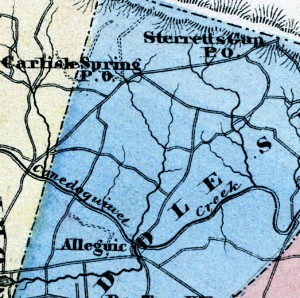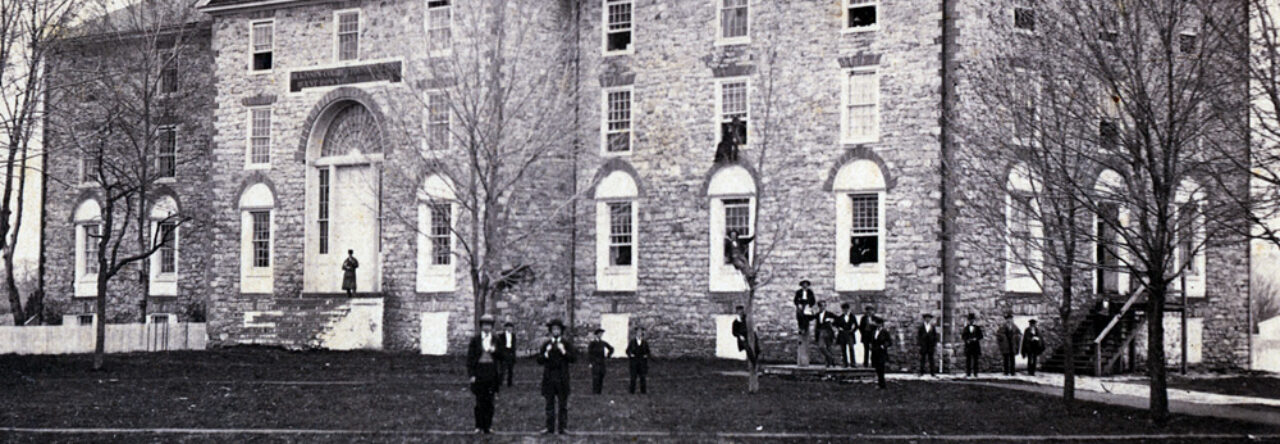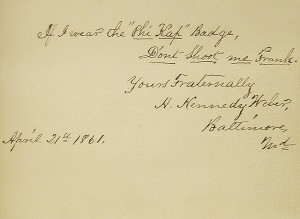 According to the Pennsylvania Historical & Museum Commission, the farthest north point of the Union attained by an organized body of the Confederate Army was present day Pennsylvania Route 34, about 1 mile north of Carlisle Springs. The Pennsylvania Historical marker, erected in 1929, states that on the morning of June 28, 1863, an organized band of the Confederate Army of Robert E. Lee reached the farm of Joseph Miller near Sterrett’s Gap. There is no evidence as to whose command these Confederates belonged to. Check out ExplorePAhistory.com for more information and details on the historical marker.
According to the Pennsylvania Historical & Museum Commission, the farthest north point of the Union attained by an organized body of the Confederate Army was present day Pennsylvania Route 34, about 1 mile north of Carlisle Springs. The Pennsylvania Historical marker, erected in 1929, states that on the morning of June 28, 1863, an organized band of the Confederate Army of Robert E. Lee reached the farm of Joseph Miller near Sterrett’s Gap. There is no evidence as to whose command these Confederates belonged to. Check out ExplorePAhistory.com for more information and details on the historical marker.
Another common conception of the farthest north point or high-water mark of the Confederate Army is a small grove of trees within a confined area known as “The Angle.” It was behind this location where the Union troops were positioned on July 3, 1863 during “Pickett’s Charge” which took place during the Battle of Gettysburg. The first government historian of the Gettysburg battlefield, John B. Bachelder, conferred the title “High Water Mark of the Rebellion” to the small grove or “copse” of trees. Bachelder’s influence led to the creation of the “High Water Mark of the Rebellion Monument,” dedicated in 1892. For more information the National Parks Service website and the Historical Marker Database provides further details, maps and images.
One other historical theory of the Confederate high-water mark is from Jeff Shaara’s Civil War Battlefields: Discovering America’s Hallowed Ground. Shaara contends that a monument representing the 11th Mississippi is the actual high-water mark. In his book he notes:
“I respect those who care deeply about paying homage to such noteworthy historical landmarks as the high-water mark. I speculate, however, that the copse of trees does not indicate the farthest advance of the Confederate troops that day. Drive just north, to the Bryan House. Walk to the stone wall on the left, peer over, and you will see the newest monument on the battlefield. This marks the spot where the battle flag of the 11th Mississippi was found as it lay across the stone wall. The 11th was part of the brigade commanded by Joe Davis, nephew of the Confederate president. By all information, a total of fourteen Mississippians reached this spot, farther into the Union position than the North Carolinians, at what is today labeled the high-water mark.”


